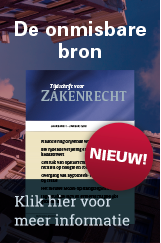Mass Torts and Mass Claims Litigation, Next Gen?
Lee Rosenthal1 Het artikel is in de opmaak van het tijdschrift rechts als pdf beschikbaar.The UK and EU, among other countries, have been diligent and avid students of United States mass tort and mass claim litigation. Papers abound on whether there are good American litigation practices that might fit other nations' approaches to mass claims, without opening the door to the oft-decried American litigation abuses. American legal scholars are similarly eager to learn about class and mass litigation practices and systems in different parts of the world. And there is no better or more important time to learn from each other than now.
First, there are no excuses. It has never been easier to learn from each other. We can meet without moving. Thoughtful scholars and practitioners have generated what is essentially a new field of law and a new area of practice – in international mass claims litigation. Mass tort and mass claim litigation systems have achieved a maturity that makes their study more reliable and accurate.
Second, it has never been more important. The need for fair, efficient, cost effective means to recognize and resolve mass claims and mass torts is growing exponentially. We have but to look at the observed and predicted effects of climate change, of political ill-will among nations, and the changes in mass-produced instruments of destruction. All of these will generate more and more serious mass torts and mass claims. How should we – how can we – respond?
The need to ensure that our responses to mass torts and mass claims are careful and productive trumps many of the other demands on our legal systems. How can we seize this moment, realize its importance and its potential in resolving mass torts and mass claims, and emerge, before it is too late, with what might be a good and workable mass tort litigation system, next gen?
We have moved from hesitation to enthusiasm and back to hesitation over using certified class actions to resolve mass torts. We have used other forms of aggregation, including multi-district litigation and bankruptcy, to achieve the large-scale preclusion that mass tort claims demand. We have used bellwether trials of particular issues or claims as catalysts to settlement. How do we move from the best of these practices, and combine them with the power of technology, to create systems of mass claim litigation, next gen?
The papers collected here range from the beginning – funding – to the ends – relief and preclusion. These papers both advance our understanding and demonstrate the need for more scholarship into international mass tort litigation. We need to define the limits of class and mass actions, next gen, now, before electronically stored information (ESI) is overtaken by AI; before careful thought is overtaken by the urge to provide an instantaneous response; and before the vision and imagination that created class and mass litigation is reduced to algorithm. American and European lawyers and law makers must have a wonderful opportunity to figure out what we should adopt from each other, to produce workable and fair systems that will meet the needs of the class and mass claims to come. Mass torts litigation, next gen. It is time.
It is fitting to try to predict where class actions will be by looking to where they began. When the 1966 amendments to Rule 23 of the Federal Rules of Civil Procedure went into effect, one of the Rule's architects, Professor and Justice Benjamin Kaplan, had these wise words:
“There are some who are repelled by these massive, complex, unconventional lawsuits because they call for so much judicial initiative and management. We hear talk that it all belongs not to the courts but to administrative agencies. But by hypothesis we are dealing with cases that are not handled by existing agencies, and I do not myself see any subversion of judicial process here but rather a fine opportunity for its accommodation to new challenges of the times. The class action takes its place in a larger search for pliant and sensitive procedures. I confess that I am exhilarated, not depressed, by experimentation which spies out carefully the furthest possibilities of the new Rule. The first three years of the Rule have already produced some innovative opinions which engage sympathetic analysis regardless of their final merits. It should perhaps be counted a measure of the quality of the Rule that it provokes such opinions.
No one, I suppose, expects of a Rule that it shall solve its problems fully and forever. Indeed, if the problems are real ones, they can never be solved. We are merely under the duty of trying continually to solve them.”2


